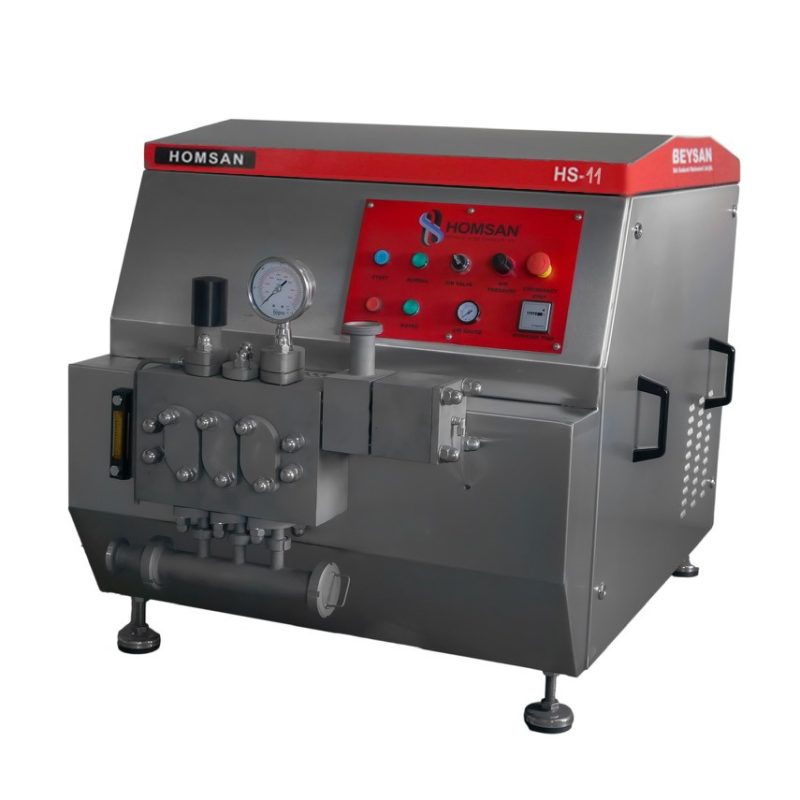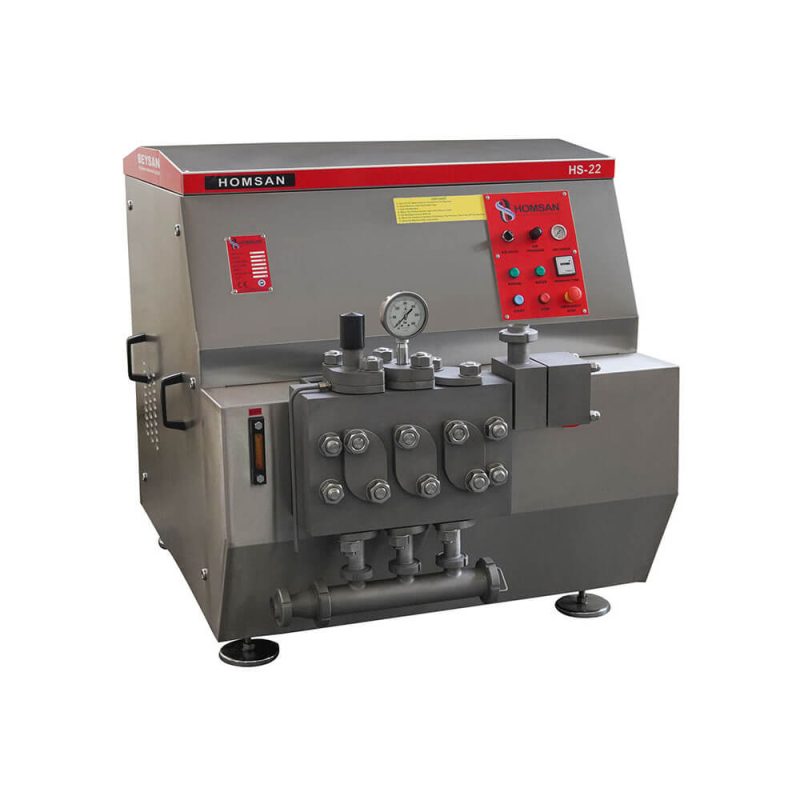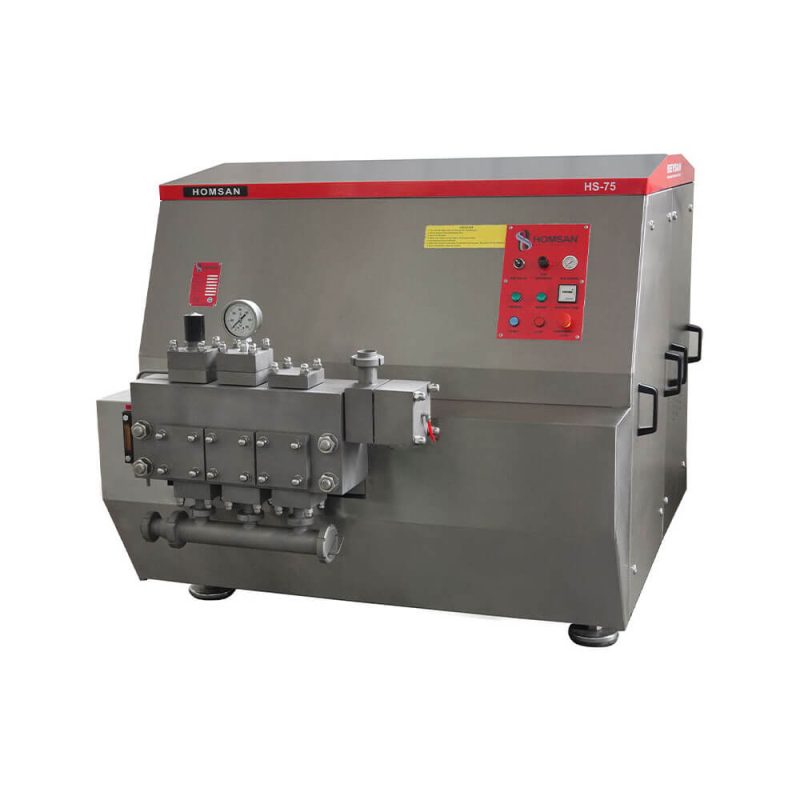Homogenizer
Showing all 7 results
The heterogeneous new mixture of two different liquids that cannot become a mixture, formed by intense mixing, shaking, and crushing, is called emulsion. Milk is an example of a natural emulsion.
There are two different emulsions according to the phase states of the liquids that make up the emulsion, which change according to the continuity. For example, the emulsion formed by the dispersion of water droplets in the pulp is called a water-pulp emulsion. If the particles are dispersed in the water forming a continuous phase, it is called particle-water emulsion. This is also seen in milk. When there is no physical or chemical intervention, the liquids that make up the emulsion are separated among themselves in a short time. To keep the emulsion state intact for a long time, a third liquid called an emulsifier is added to the mixture.
Since the rate of separation of the discontinuous phase in the mixture is directly proportional to the square of the particle diameter, reducing the particle diameter does what the emulsifier does. To maintain the emulsion state for a long time, the process of breaking the liquid and forming the discontinuous phase into very small particles is called homogenization for short. Products that can perform this chemical process are called homogenizers.
Working Principle of Homogenizers
The homogenizer is crushed by creating pressure by the pistons in the front head block and divided into smaller microns. The fragmented particles thus become homogeneous. Thanks to the homogenizers that can perform this process, your production continues as you wish. It is recommended that the enterprises that will produce in the field of milk production should know homogenizers. They need to choose the right homogenizer according to their production capacity and potential. The function of homogenizers is important in the process where milk reaches the production line from the farms and from there to the consumers.
Homogenizer Models
High-Pressure Homogenizers
The high-pressure homogenizer is the most common mixer type developed in the industrial field around the world. The fact that it can be used for different purposes for different products and its ability to create a homogeneous mixture has made it one of the most frequently used devices. Piston types consist of a pump and valve. It is beneficial in obtaining homogeneous mixtures from viscous liquids with positive back-and-forth movements. A large amount of piston helps to balance the fluid going to the valve and thus to less vibration.
Benefits of Homogenizers
Homogenizers are tools that are actively used in many sectors such as dairy products, cosmetics, the chemical industry, and petro chemistry, and are essential for production. Milk production can be given as an example to better understand the functioning of the homogenizer.
The homogenizer ensures that the milk fat is evenly distributed in the whole milk. In this way, while the digestion of milk fat is facilitated, it also increases its flavor. At the same time, since the milk becomes fully homogeneous after the homogenization process, the milk will have a clearer appearance, and the viscosity of the milk will increase. The use of a homogenizer significantly increases the quality and shelf life of milk.
Basically, 4 main reasons may be counted for homogenizing milk.
- Since the oil is evenly distributed, the cream is not collected on top.
- Homogenized milk looks cleaner and more interesting.
- The shelf life of homogenized milk is extended, up to about 2 weeks.
- Homogenization allows milk from different sources to be combined in one platform.
How Is Milk Homogenized?
Homogenization of milk consists of 2 stages. The first stage is the machine squeezing the milk with the help of small pores or tubes. As the pressure increases due to the small diameter of the holes and the constant flow of milk, the fat particles begin to break up. The higher the pressure, the smaller the particles. The shrinking oil particles begin to come together again. In doing so, they trap casein and whey in their walls, some of which are surrounded by protein. This is why clumping occurs. The second step of homogenizing milk is to break up these aggregates and distribute the particles homogeneously in the milk.
Homogenizer Prices
The function of homogenizers is quite different and their prices vary according to their features. Depending on your production model and capacity, you may need to choose homogenizers of different sizes and functions. Those who want to serve in the field of milk production are recommended to research homogenizer prices.




